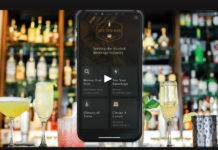 Bar owners are becoming more aware of their profit margins and the notion that draft beer management is a key component to keeping them healthy.
Bar owners are becoming more aware of their profit margins and the notion that draft beer management is a key component to keeping them healthy.
“Draft beer offers one of the most profitable platforms of beer service, yet represents a monitoring nightmare for managers. While tap locks do exist, and can be used to prevent theft during closed hours, there is far more room for error during the hours of operation when waste and free-pours are going to occur. Unfortunately managers will never truly know the impact of their losses until they can quantify them, but this is where companies like US Beverage Net (USBN) step in.
USBN’s core service is the bevMANAGER (bM) system, which is aimed towards establishments that serve draft beer. The system essentially contains flow meters for each draft line that are attached to the bevBOX—the system brain—which is connected to the Internet. Approved employees can access USBN’s secure server online from any Internet connection and view, in real-time, the ounces being poured from each draft line. A high-speed Internet connection is the minimum requirement, however the system’s true capabilities are brought out when there is a POS system in place. POS data is correlated with the bevBOX to check that each beer being poured is being paid for.
A system report is sent each morning with details of the previous day’s performance, allowing management to easily monitor beer losses on each draft line and identify any irregularities. “Every morning they [managers] look at their variance reports for the prior day,” says Adrian Oca, Director of Operations for Hootwinc, a popular west coast Hooters™ franchisee bar. “They track which bartenders were working those days, and that way, if they do have a problem down the line, we can see trends and monitor them if they were consistent with an individual employee or if it was a system wide problem.”
Once monitoring is in place, how much can beer loss typically be reduced? Tom Young, USBN’s Director of Client Relations, claims, “the average monthly loss, prior to staff being notified that the system has been installed, has been around 10-15%. Then after the staff has been notified that the system has been installed, we are usually able to get them down below 5% loss.” One Piccadilly Pub venue saw a reduction of two to three kegs a week in beer waste. That equates to 60 to 90 gallons per week of lost beer and profits!
The profits regained from the beer that was once lost can quickly compensate for the system’s cost. “It was one of those investments that we probably would be a little skeptical of in the beginning, thinking, ‘how could you be losing so much product that it’s really gonna be worth it to pay for itself?’” says Oca. “But I think it has surpassed

our expectations as to its capabilities and has become a very worthwhile investment.” One end user, a Quaker Steak and Lube franchisee, regained their installation investment and a full year of fees from the recovered profits after just one busy night.
For those concerned with cost, there are different pricing models. “We do have a model where the customer can pay an upfront installation fee and then have a lower monthly fee, or they can just have a higher monthly fee and we would waive the installation fee,” says Young. While installation is not very involved, there is a period where the baselines need to be established and thresholds determined. This allows users to set alerts for appropriate levels and to determine an accurate scale to which they’ll hold their staff.
“Its kind of like installing surveillance cameras,” Oca says. “I think just their presence makes someone think that there may be someone keeping an eye on them. So they are probably going to work a little harder and work a little smarter. I think the best overall feature is just that extra heightened awareness by our staff behind the bar.” And when there are “surveillance cameras,” you may catch an unexpected culprit, as Oca did.








